Features and rules of bicycle transportation

A bicycle can pass where no other car can pass - this is a fact. But all the time there is a need to transport the bike itself over a more or less distant distance. It's time to figure out exactly how to do this, and what bike owners need to consider in order to avoid problems.

Urban transport
If cyclists cannot ride directly from home (for example, they are going to train in a distant stadium or in the suburbs), the bike must be transported. And the easiest way to do this is for owners of private cars. Certain car models (for example, from Opel) are even equipped with special mounts. Rooftop placement is not only the "oldest" option, but also the safest option. The mounts are equipped with locks to prevent theft.

Some car manufacturers even offer to mount the bike. to the back door. But the cost of such devices starts at 4000 rubles. When it comes to transporting your bike in the trunk or in the cabin, this minimizes the risk of theft. However, then the bike can only be transported disassembled, otherwise it will not fit there. In addition, many people are unable to ride a bicycle by car.

It is quite possible to do this on the bus. However, it should be borne in mind that carrier regulations almost always bypass the transport of bicycles. In the best case, the dimensions of carry-on luggage and luggage are usually mentioned. Also, getting on the bus during rush hour is unlikely to be successful. If they are allowed to travel, they will be “happy” that they have to pay.
For a bicycle, passengers usually pay the same as for an adult.

In this case, one must remember about the limitation: in length, height and width in total, the bike must be no more than 1.8 m in size. If you do not buy a ticket or violate the baggage size requirements, you will have to pay a fine when meeting with the controllers. According to similar rules, cyclists can ride a tram or a trolleybus. But it is better to refrain from experimenting with a trip by a fixed-route taxi. There are not so much formal rules as considerations of the convenience of the driver and other passengers; besides, it is not very convenient to ride a bike ourselves.
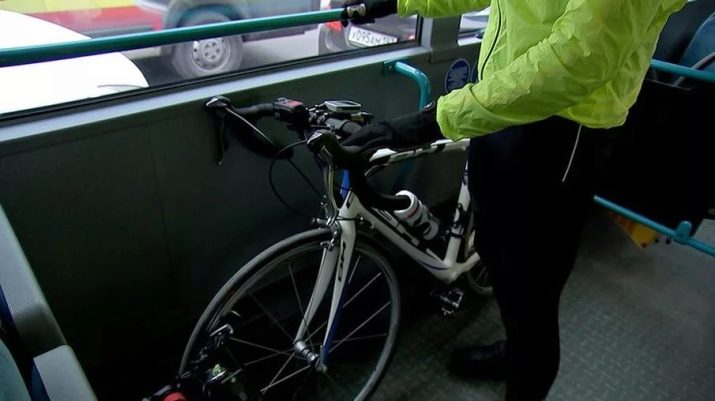
Concluding the overview of travel options in public transport, it is worth pointing out that you can only take a children's bike or a folding bike on the metro. A full-fledged road "horse" will not be allowed to pass. A bicycle is considered “disassembled and packed” according to the metro criteria when:
- removed the front wheel;
- turned the steering wheel to a right angle;
- put accessories or optional parts in a bag or case.

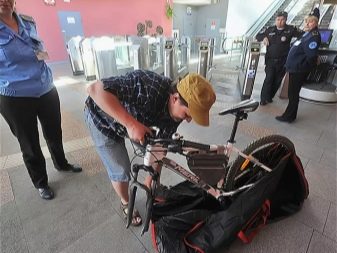
In the metro, the maximum total dimensions along all three axes are 1.5 m.
If they are larger, free travel is not possible. You will have to buy an additional ticket. In the carriage, it is better to put the bike closer to the doors, but so that there are no obstacles to their opening and closing, the passage of people. You cannot ride a bicycle at metro and monorail stations, as well as in a carriage.

Intercity transportation
Many people have to travel very far with their bike. And that's why it is important to know the rules of transportation on a long-distance bus. Usually, the rules of travel by the transport company are explained at the ticket office when buying a ticket. Prudent passengers visit the sites in advance or clarify the necessary information by phone.
Usually the bike is recognized as luggage and is carried accordingly in the luggage compartment.
But when boarding at a stop (if, of course, the bus makes stops along the way), there may not be enough space in the luggage compartment.
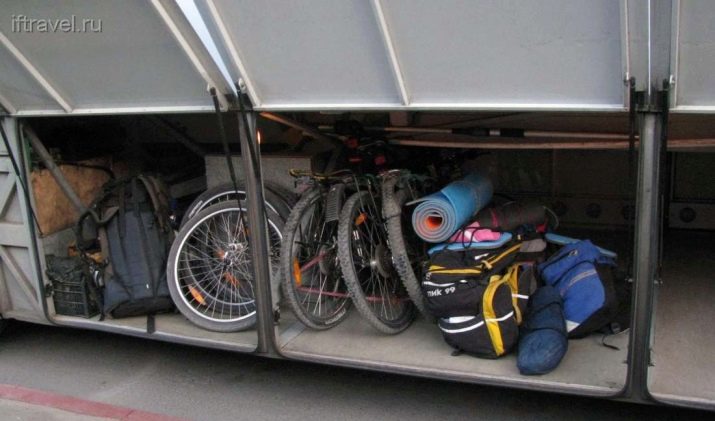
According to the decree of the government of the Russian Federation the amount of baggage transported in intercity traffic is strictly limited.
The maximum permissible bicycle dimensions on all three axles are 1.8 m.
All baggage is checked in at checkout. Its sample and basic details are officially established. The declared value and the tariff for the carriage of baggage with a certain declared value must be written.

It should be borne in mind that carriers establish additional rules of their own.
Firm Ecolines, for example, allows you to take 3 pieces of luggage up to 30 kg each; the carrier is responsible for the delivery of the cargo, but not for its serviceability or the safety of its basic qualities. Breakage of wheels and handles, scratches and dents are considered minor damage and will not be recognized as a basis for claims. Additional baggage (in excess of the usual weight) may not be accepted even for a fee.
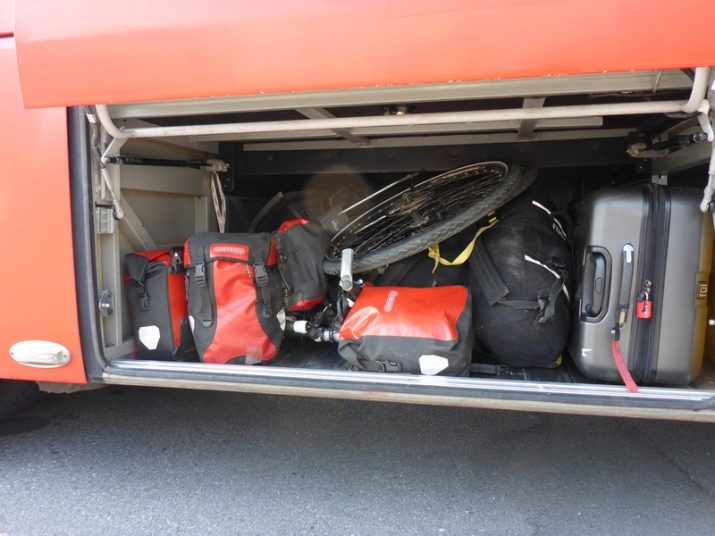
But people can go on a long journey by train. Disassembled bicycles in a package are equal to 1 piece of baggage weighing 10 kg. Passengers are obliged to keep their bike on the road in such a way, which will not cause problems for other people. Transportation of bikes in luggage compartments is allowed. From 1 passenger there will be 3 baggage items with a total weight of up to 200 kg, and 1 piece can weigh a maximum of 75 kg.

There is also a completely "extreme" case: when you need to fly somewhere with your bike. All airlines classify such baggage as oversized cargo. It can be transported free of charge only if the weight restrictions set by the carrier are observed. Pack your bike separately from other items. The tag is placed where non-standard goods are registered. The indicative rates of the leading companies are as follows:
- Aeroflot - 50 euros;
- Qatar Airways and Emirates - up to 30 kg free;
- Air France - 75 euros;
- KLM - 55 EUR;
- Lufthansa - free of charge within the limit for each class of service;
- Ryanair - € 80 round trip.

The topic of bicycles and water transport deserves special attention.
The transport of bikes on river and sea vessels does not present any problems.
Almost any ferry and pleasure cruise ship has specially designated areas. On small vessels, where space is limited, you will have to negotiate directly with the crew. Anyway it is better to take a cover and fasten the bike so that it does not fall during a roll or storm.
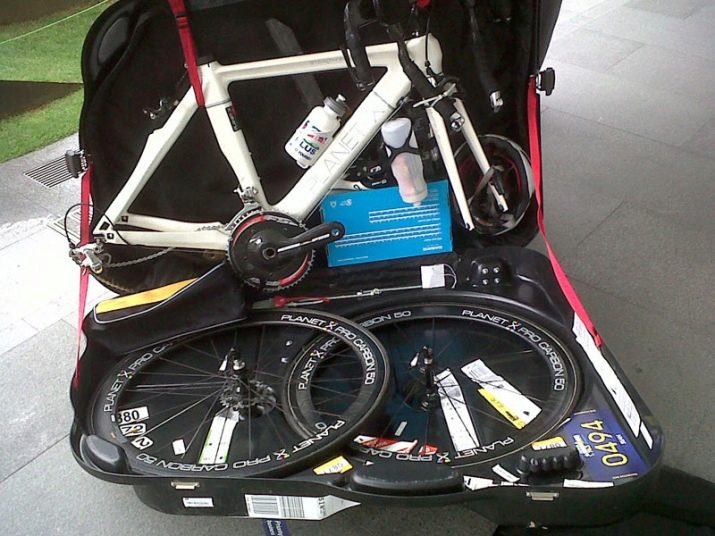
Container
Regardless of the specific mode of transport, it is better to pack the bike. A very reliable way - purchase of a special wardrobe trunk. True, it is not cheap at all, and such a package will not work directly on the hike. You can prepare yourself using:
- plastic cable ties;
- stretch wrapping film;
- luggage rubber bands;
- nippers;
- knife;
- a couple of rolls of wide tape.
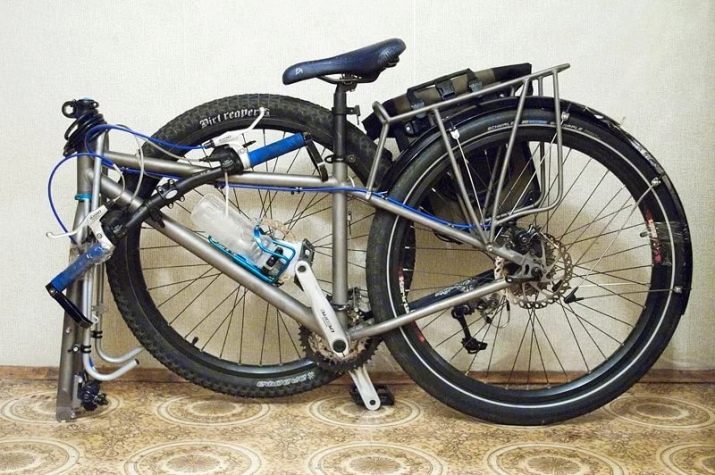
Beforehand, all unnecessary things are removed from the bike, the pedals, the front wheel and the saddle are removed. Then dismantle the steering wheel and rear wheel. The switch is grabbed with a plastic clip inside the rear triangle, and the pedals are attached there. They put the bike on a pad and fix it with tape so that the mat does not fall off.

In the next video, you will learn about the features of transporting a bicycle on an Aeroflot aircraft.








